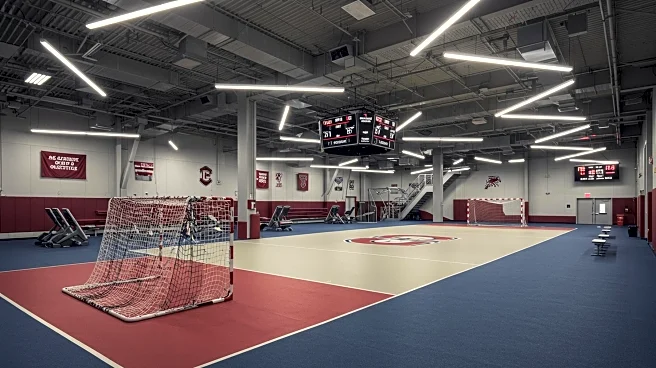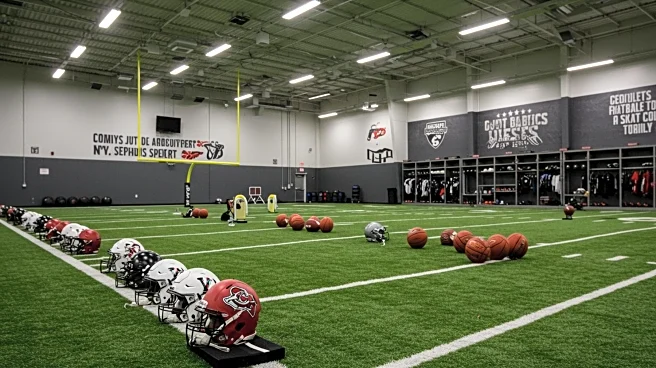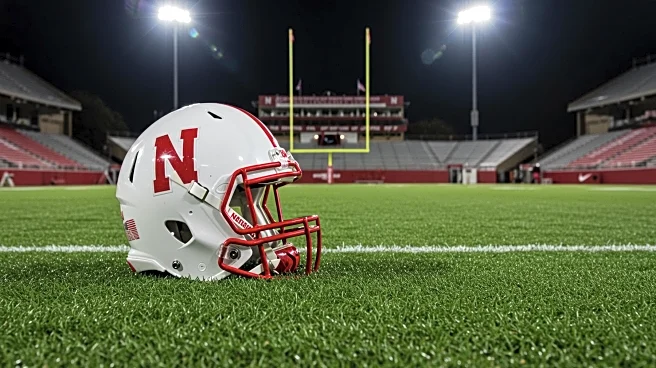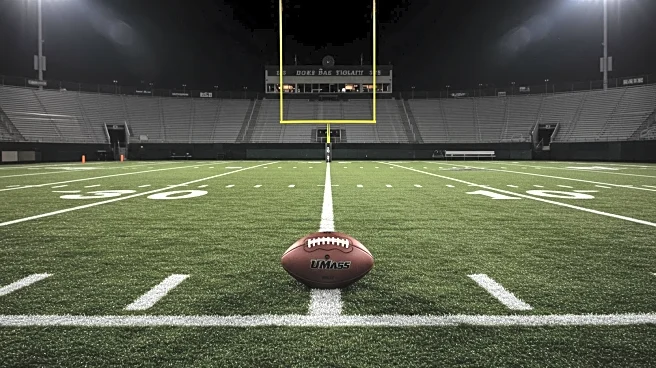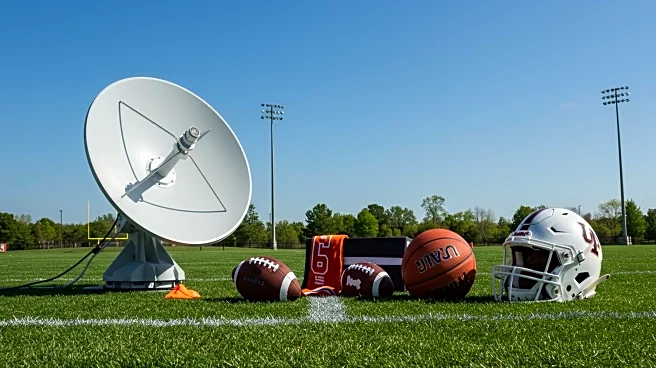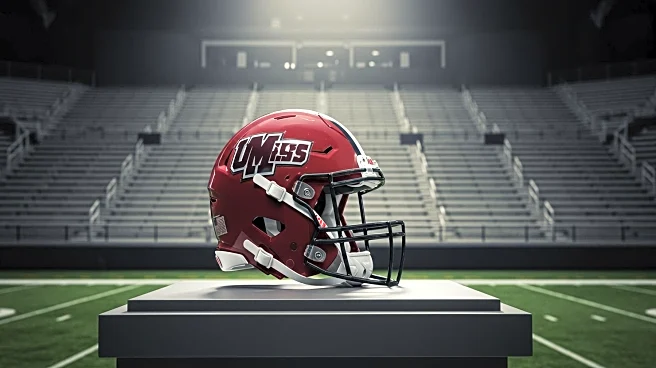What's Happening?
The University of Oregon is undergoing a significant construction project to build a new indoor practice facility adjacent to Autzen Stadium. The facility, named '2.Mo,' spans 170,000 square feet, including 130,000 square feet of field space and a 40,000 square foot connector to the Hatfield-Dowlin Complex (HDC). This connector will feature an expanded weight room and a players' lounge. The facility is set to be one of the tallest and largest indoor football practice facilities in the nation, with direct access to two outdoor practice fields. It will also include a classroom/meeting room for film study and drill breakdowns, as well as a rooftop players' lounge overlooking Autzen Stadium. Construction is expected to be completed by 2027, with the team currently utilizing Rich Brooks Field and the Moshofsky Center for practices.
Why It's Important?
The development of the new indoor practice facility represents a significant investment in the University of Oregon's athletic infrastructure, potentially enhancing the training capabilities and overall experience for student-athletes. This facility could attract top-tier talent to the university, boosting its competitive edge in college athletics. The integration of advanced training spaces and amenities like nutrition and recovery areas underscores the university's commitment to athlete development and well-being. The project may also contribute to the local economy through construction jobs and increased activity around the campus.
What's Next?
As construction progresses, the University of Oregon will continue to utilize existing facilities for practice. Upon completion, the new facility is expected to become a central hub for the Ducks' athletic programs, potentially influencing recruitment and training strategies. Stakeholders, including university officials and athletic department leaders, will likely monitor the project's impact on team performance and campus engagement. The facility's completion could also prompt other universities to consider similar investments in their athletic infrastructure.
Beyond the Headlines
The construction of such a large-scale facility raises questions about the balance between academic and athletic investments at universities. While enhancing athletic programs can boost a school's profile and revenue, it is essential to ensure that academic resources and student support services are not overshadowed. Additionally, the environmental impact of large construction projects should be considered, prompting discussions on sustainable building practices.


